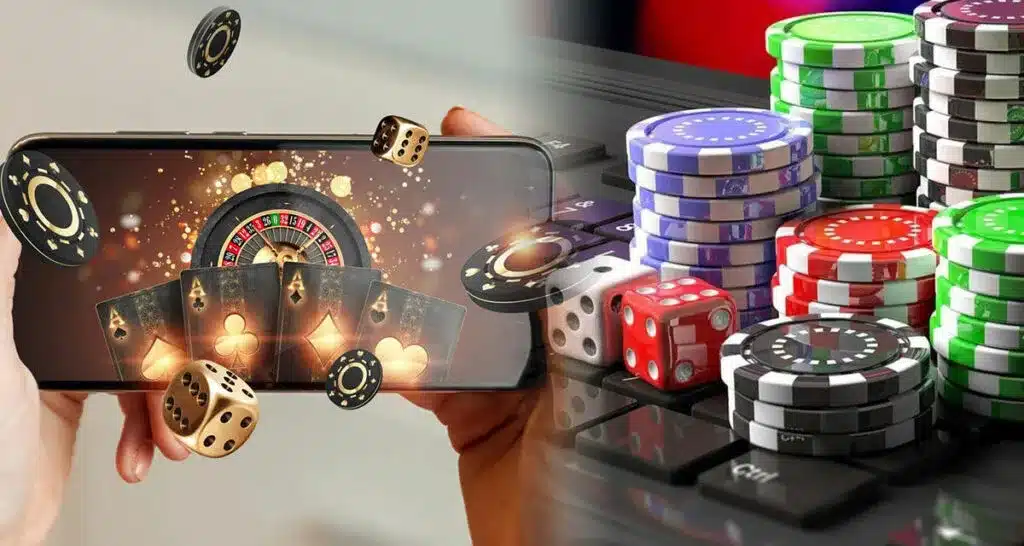In recent years, gamification has become one of the most influential trends shaping the digital entertainment industry. The journey from Blooket Play to casino online Slovenia platforms reveals how gamification principles transcend industry boundaries. Whether in educational settings like Blooket Play or entertainment hubs such as casino online platforms, game design mechanics now shape digital experiences far beyond traditional gaming. The goal is simple: increase engagement, retain users, and create immersive experiences that blur the line between learning and leisure.
The Rise of Blooket and Its Appeal
Blooket has emerged as a popular tool for teachers and students because it blends education with fun, interactive challenges. By joining a Blooket game, students are no longer passive learners—they compete, strategize, and actively participate in their lessons. This level of engagement can significantly improve knowledge retention. In many ways, Blooket has redefined how learning is perceived, making the classroom feel more like a digital playground.
The platform’s ability to transform quizzes into competitive rounds with rewards, leaderboards, and streak bonuses highlights the power of gamification. These elements tap into human psychology, where rewards and achievements stimulate dopamine, reinforcing behavior and encouraging continued participation.
Understanding the Connection: Blooket Play to Casino Online
Examining the transition from Blooket Play to casino online environments reveals surprising similarities in how both platforms leverage gamification to maximize user engagement and retention.
Parallels with Online Casinos
The mechanics that make Blooket so engaging are surprisingly similar to those used in online casinos. When players log into a digital casino, they are immediately immersed in a gamified environment. Leaderboards, reward systems, loyalty programs, and achievements are everywhere. Much like students strive to top their class scoreboard in Blooket, casino players chase badges, bonuses, and status levels to enhance their sense of achievement.
This overlap demonstrates that gamification is not exclusive to one industry—it’s a universal mechanism that taps into motivation, competition, and reward-seeking behavior. While the objectives differ—education versus entertainment—the mechanics share remarkable similarities.
Gamification as a Universal Language
Gamification functions as a universal language in digital interaction. For educators, it is a way to make knowledge stick. For casino operators, it is a method to keep players engaged. Both rely on the same fundamental building blocks:
- Challenges: Be it solving math problems on Blooket or playing a slot machine round.
- Progression: Moving to the next level or unlocking a new bonus.
- Recognition: Seeing your name on a leaderboard or earning loyalty points.
- Rewards: Receiving coins, spins, or in Blooket’s case, in-game benefits.
The psychology is consistent: users want to feel that their actions are rewarded, and gamification satisfies this need.
Educational Value vs. Entertainment Value
Despite the similarities, it is important to distinguish between the educational and entertainment aspects of gamification. Blooket primarily serves as a teaching aid, promoting active learning and critical thinking. Casino platforms, on the other hand, are built for entertainment and the thrill of chance. However, both environments are carefully designed to maximize engagement through gamified systems.
This balance of purpose is crucial. Blooket focuses on knowledge, while online casinos focus on providing a leisure experience. Yet, both industries rely on keeping users coming back for more.
The Role of Technology in Expanding Gamification
Technological advancements such as artificial intelligence, virtual reality, and mobile accessibility have allowed gamification to evolve rapidly. For Blooket, this means integrating smarter quiz mechanics and adaptive learning systems. For casinos, it means creating highly interactive games with real-time feedback, virtual dealers, and even VR-based gaming tables.
Mobile access is another major driver. Students can join Blooket games on their phones, while players can spin a slot machine or join a poker table on a mobile casino app. The convergence of mobile-friendly gamification ensures accessibility and convenience across both sectors.
User Engagement and Retention
Gamification’s biggest strength lies in its ability to boost user engagement and retention. For educators, this translates into students being more motivated to study. For casino operators, it means loyal players who keep returning. Reward structures—like daily login bonuses in Blooket or free spins in online casinos—are carefully designed to keep users involved day after day.
This retention is not accidental. Game designers and platform developers invest heavily in research to understand user behavior and refine reward systems. The ultimate objective is to create experiences that are both enjoyable and habit-forming.
Lessons Each Industry Can Learn from the Other
Interestingly, there are lessons that educational platforms and casinos can learn from one another. Blooket could adopt more advanced personalization tools seen in casinos, tailoring challenges based on user behavior. Casinos, on the other hand, could look to Blooket’s approach of cooperative play and knowledge-sharing to foster community-driven experiences, moving beyond purely competitive models.
Such cross-pollination of ideas has the potential to push gamification into new and unexplored territories, benefiting users with richer, more balanced experiences.
The Future of Gamification
Looking ahead, gamification is poised to expand into nearly every corner of our digital lives. From fitness apps that reward daily workouts to financial tools that gamify savings goals, the applications are endless. The success of Blooket Play in classrooms and the growing popularity of online casinos highlight how adaptable these systems are across diverse industries.
As more platforms adopt gamification, users can expect increasingly sophisticated systems that make learning, playing, and even working feel like a game. The critical factor will be balance: ensuring that gamification remains engaging without becoming manipulative.
Conclusion
From Blooket Play to casino platforms, gamification has emerged as a powerful tool that unites education and entertainment under the same framework of rewards, challenges, and recognition. By understanding the psychology behind these systems, both industries have managed to keep users hooked, motivated, and eager to return.
The spectrum from Blooket Play to casino online demonstrates that gamification is the universal language of digital engagement. Whether it’s a student answering quiz questions or a player spinning the roulette wheel, the psychology of progress and achievement remains constant across platforms.

